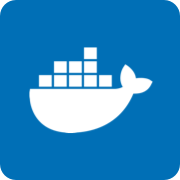Docker 17参考手册
引擎 | Engine
PostgreSQL(引擎) | PostgreSQL (Engine)
在Docker上安装PostgreSQL
假设没有符合您需要的码头形象码头枢纽,你可以自己创造一个。
首先创建一个新的Dockerfile*
注这个PostgreSQL设置只用于开发目的。请参考PostgreSQL文档来微调这些设置,使其具有适当的安全性。
#
# example Dockerfile for https://docs.docker.com/examples/postgresql_service/
#
FROM ubuntu
# Add the PostgreSQL PGP key to verify their Debian packages.
# It should be the same key as https://www.postgresql.org/media/keys/ACCC4CF8.asc
RUN apt-key adv --keyserver hkp://p80.pool.sks-keyservers.net:80 --recv-keys B97B0AFCAA1A47F044F244A07FCC7D46ACCC4CF8
# Add PostgreSQL's repository. It contains the most recent stable release
# of PostgreSQL, ``9.3``.
RUN echo "deb http://apt.postgresql.org/pub/repos/apt/ precise-pgdg main" > /etc/apt/sources.list.d/pgdg.list
# Install ``python-software-properties``, ``software-properties-common`` and PostgreSQL 9.3
# There are some warnings (in red) that show up during the build. You can hide
# them by prefixing each apt-get statement with DEBIAN_FRONTEND=noninteractive
RUN apt-get update && apt-get install -y python-software-properties software-properties-common postgresql-9.3 postgresql-client-9.3 postgresql-contrib-9.3
# Note: The official Debian and Ubuntu images automatically ``apt-get clean``
# after each ``apt-get``
# Run the rest of the commands as the ``postgres`` user created by the ``postgres-9.3`` package when it was ``apt-get installed``
USER postgres
# Create a PostgreSQL role named ``docker`` with ``docker`` as the password and
# then create a database `docker` owned by the ``docker`` role.
# Note: here we use ``&&\`` to run commands one after the other - the ``\``
# allows the RUN command to span multiple lines.
RUN /etc/init.d/postgresql start &&\
psql --command "CREATE USER docker WITH SUPERUSER PASSWORD 'docker';" &&\
createdb -O docker docker
# Adjust PostgreSQL configuration so that remote connections to the
# database are possible.
RUN echo "host all all 0.0.0.0/0 md5" >> /etc/postgresql/9.3/main/pg_hba.conf
# And add ``listen_addresses`` to ``/etc/postgresql/9.3/main/postgresql.conf``
RUN echo "listen_addresses='*'" >> /etc/postgresql/9.3/main/postgresql.conf
# Expose the PostgreSQL port
EXPOSE 5432
# Add VOLUMEs to allow backup of config, logs and databases
VOLUME ["/etc/postgresql", "/var/log/postgresql", "/var/lib/postgresql"]
# Set the default command to run when starting the container
CMD ["/usr/lib/postgresql/9.3/bin/postgres", "-D", "/var/lib/postgresql/9.3/main", "-c", "config_file=/etc/postgresql/9.3/main/postgresql.conf"]从Dockerfile构建一个图像,为它指定一个名称。
$ docker build -t eg_postgresql .在前台%29中运行PostgreSQL服务器容器%28:
$ docker run --rm -P --name pg_test eg_postgresql有两种连接PostgreSQL服务器的方法。我们可以用链接容器,或者我们可以从主机%28或网络%29访问它。
注*
--rm在容器成功退出时移除容器及其图像。
使用容器链接
容器可以直接链接到另一个容器的港口-link remote_name:local_alias在客户的docker run这将设置一些环境变量,然后可用于连接:
$ docker run --rm -t -i --link pg_test:pg eg_postgresql bash
postgres@7ef98b1b7243:/$ psql -h $PG_PORT_5432_TCP_ADDR -p $PG_PORT_5432_TCP_PORT -d docker -U docker --password从您的主机系统连接
假设安装了PostgreSQLClient,也可以使用主机映射端口进行测试。你需要用docker ps要了解容器首先映射到哪个本地主机端口:
$ docker ps
CONTAINER ID IMAGE COMMAND CREATED STATUS PORTS NAMES
5e24362f27f6 eg_postgresql:latest /usr/lib/postgresql/ About an hour ago Up About an hour 0.0.0.0:49153->5432/tcp pg_test
$ psql -h localhost -p 49153 -d docker -U docker --password测试数据库
一旦您通过身份验证并拥有docker =#提示,您可以创建一个表并填充它。
psql (9.3.1)
Type "help" for help.
$ docker=# CREATE TABLE cities (
docker(# name varchar(80),
docker(# location point
docker(# );
CREATE TABLE
$ docker=# INSERT INTO cities VALUES ('San Francisco', '(-194.0, 53.0)');
INSERT 0 1
$ docker=# select * from cities;
name | location
---------------+-----------
San Francisco | (-194,53)
(1 row)使用容器卷
可以使用定义的卷检查PostgreSQL日志文件,并备份配置和数据:
$ docker run --rm --volumes-from pg_test -t -i busybox sh
/ # ls
bin etc lib linuxrc mnt proc run sys usr
dev home lib64 media opt root sbin tmp var
/ # ls /etc/postgresql/9.3/main/
environment pg_hba.conf postgresql.conf
pg_ctl.conf pg_ident.conf start.conf
/tmp # ls /var/log
ldconfig postgresqldocker,示例,软件包安装,postgresql
引擎 | Engine相关

Docker 是一个开源的应用容器引擎,让开发者可以打包他们的应用以及依赖包到一个可移植的容器中,然后发布到任何流行的 Linux 机器上,也可以实现虚拟化。容器是完全使用沙箱机制,相互之间不会有任何接口。
| 主页 | https://docker.com/ |
| 源码 | https://github.com/docker/docker |
| 版本 | 17 |
| 发布版本 | 17.06 |
 加载中,请稍侯......
加载中,请稍侯......